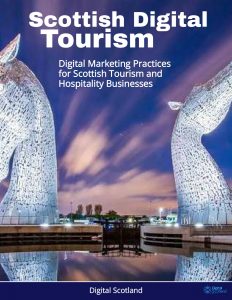 The most powerful approach to industry cluster development for economic growth purposes is to maximize the intersection between them.
The most powerful approach to industry cluster development for economic growth purposes is to maximize the intersection between them.
For example for Scotland one of our key industry focus areas is Tourism, and another is Media.
The perfect example of their intersection is the ‘Outlander Effect‘, the growth in visitor traffic to Scotland that the very popular TV show generated. The popularity of Outlander has significantly boosted tourism in Scotland, with fans flocking to visit filming locations, historic sites, and themed experiences.
Known as “Outlander tourism,” this phenomenon has led to a surge in guided tours, themed attractions, and cultural experiences tied to the show’s settings and 18th-century Scottish history.
Heritage Tourism – Leveraging Scotland’s rich history
For tourism venues through e-commerce sales of tartan products, Scotland’s heritage offers a goldmine of what is truly valued most in today’s online world – Storytelling that stimulates the mind and soul, and any Scottish company can thoughtfully relate this to their online business to better achieve audience engagement.
The key to capturing this market is content for engaging Internet research. As Digital Tourism Scotland describes:
“Did you know that 90% of travelers research their holidays online and 80% book their holidays online? Digital channels play a huge role in the visitor experience. From dreaming up their ideal trip to sharing it, good digital marketing is essential for any business looking to get the attention of today’s visitors.”
During this research stage tourists aren’t necessarily interested in the logistics of the trip, the hotel bookings et al, instead they are seeking a stimulating experience.
Scotland’s history is a treasure trove of assets that can be utilized towards this goal. Our heritage of folklore, the historic battles and the tales of family tartans all are rich sources of the type of storytelling ideal for eye-catching promotional blogs.
This is the ideal type of content for publishing online to catch the attention of potential visitors planning their vacation, and it’s typically the local residents who are the most expert, so providing them the tools to easily publish it is a key success factor.
Chinese Micro-Dramas
So do we sit back and wait for Hollywood to create more Outlander series?
Not at all, and this highlights another aspect of the opportunity to maximize the intersection between sectors, in this case ‘micro-dramas’ that are becoming hugely popular in China. Scotland could cultivate their own local versions of this, especially taking into account the above points where we might focus on our history and folklore.
Chinese micro-dramas (also known as duanju or short dramas) are ultra-short episodic video series, typically 1-2 minutes per episode, designed for vertical mobile viewing on platforms like Douyin (TikTok’s Chinese version), Kuaishou, and dedicated apps. By mid-2025, over 150,000 micro-dramas have been produced in China, reaching a domestic user base of around 696 million (nearly 60% of the online population).
The micro-drama sector has exploded from a niche format to a dominant force in China’s entertainment landscape, outpacing traditional media like box office films. In 2024, 36,400 new series were released, and market projections estimate a market of $9.4-13 billion in 2025, driven by premium content and AI integration, with long-term forecasts growing to $16.2 billion by 2030.
Series cost $14,000-$110,000 to produce (vs. millions for full dramas) and can be shot in weeks, enabling rapid iteration, highlighting the key, double-barrelled opportunity for Scotland: This format could be leveraged to create content that both advances the Scottish media production industry into a massive, dynamic global market, and by doing so creates content that further boosts tourism traffic.



